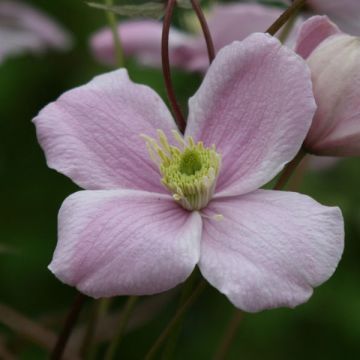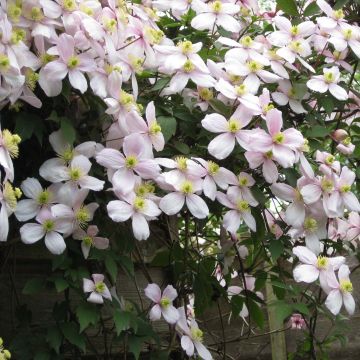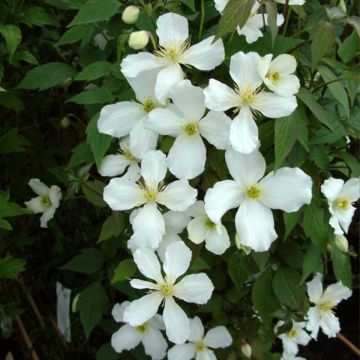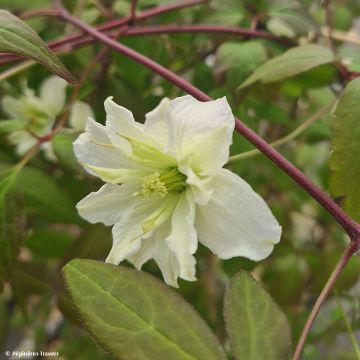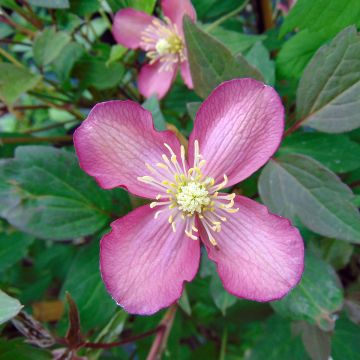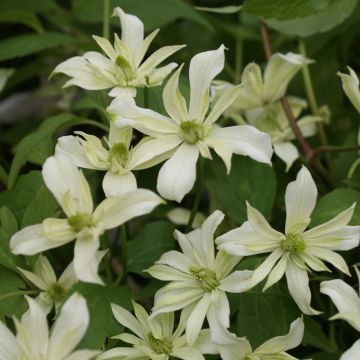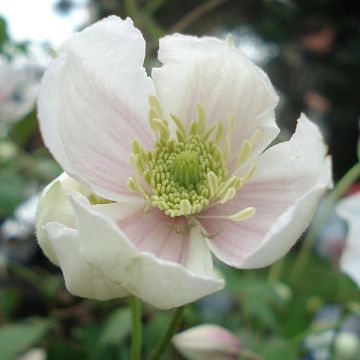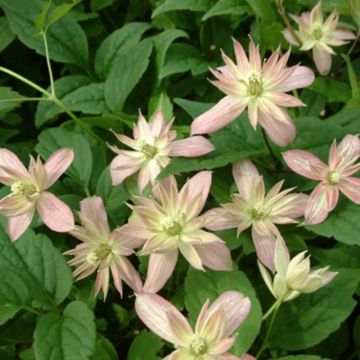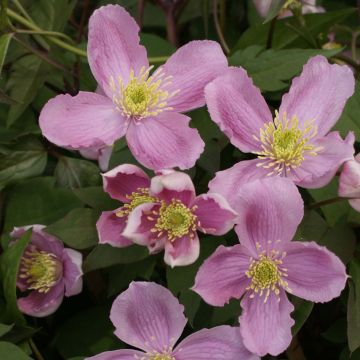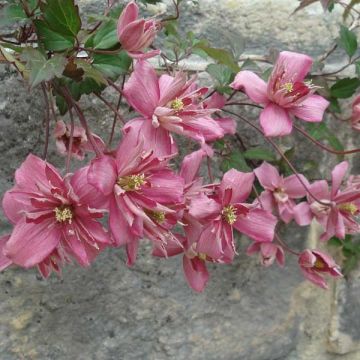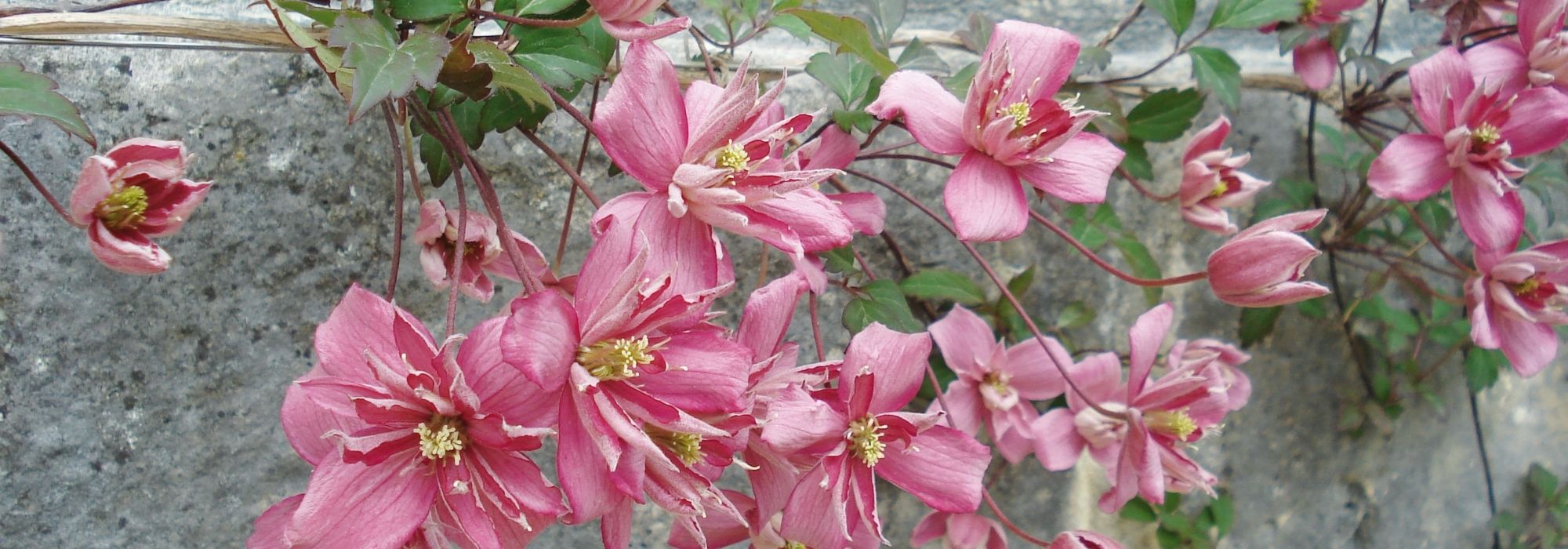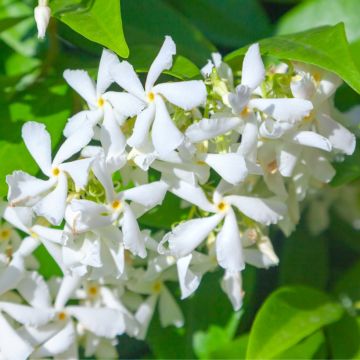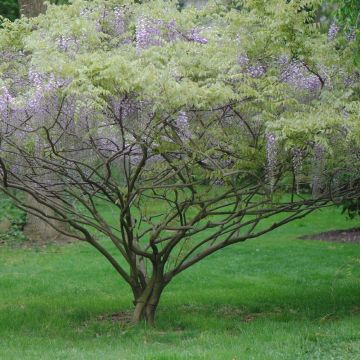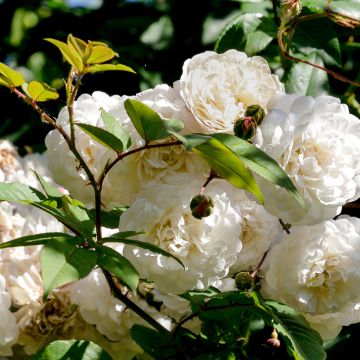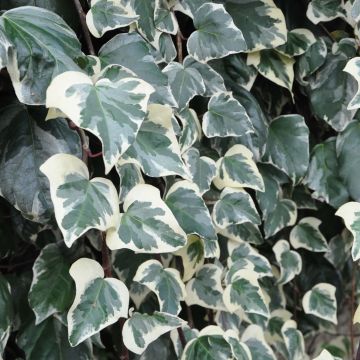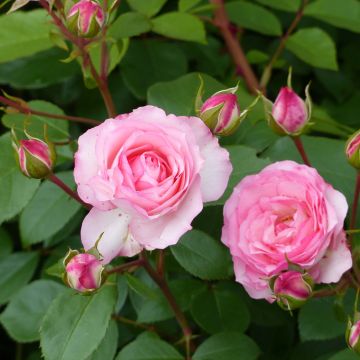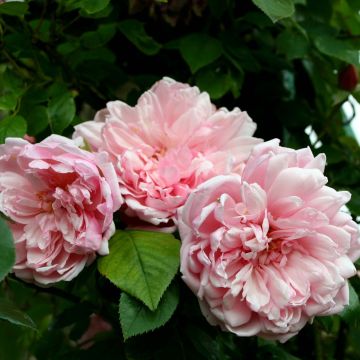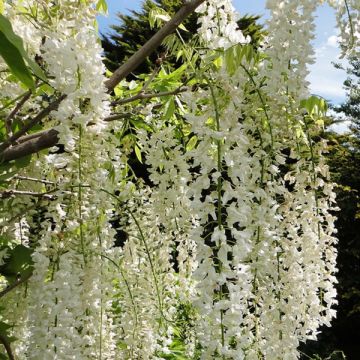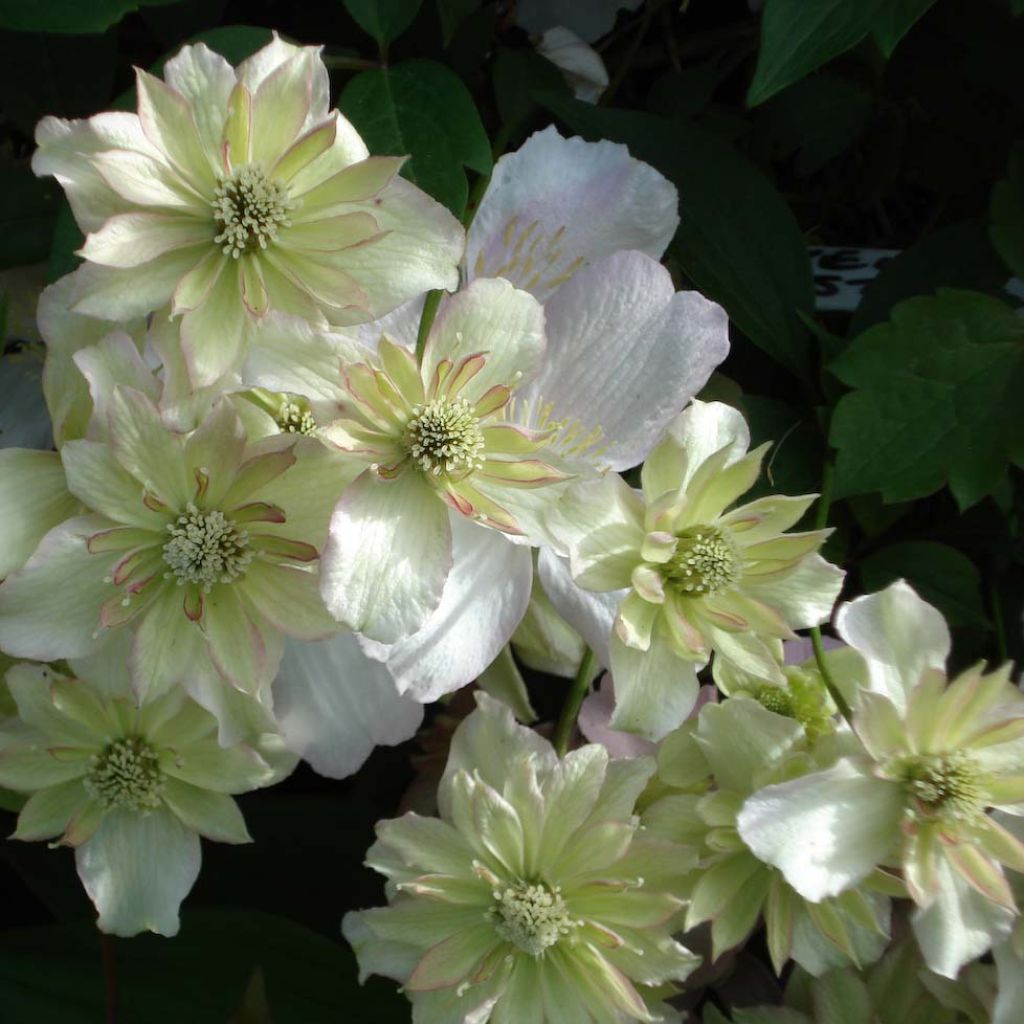

Clématite Double Delight
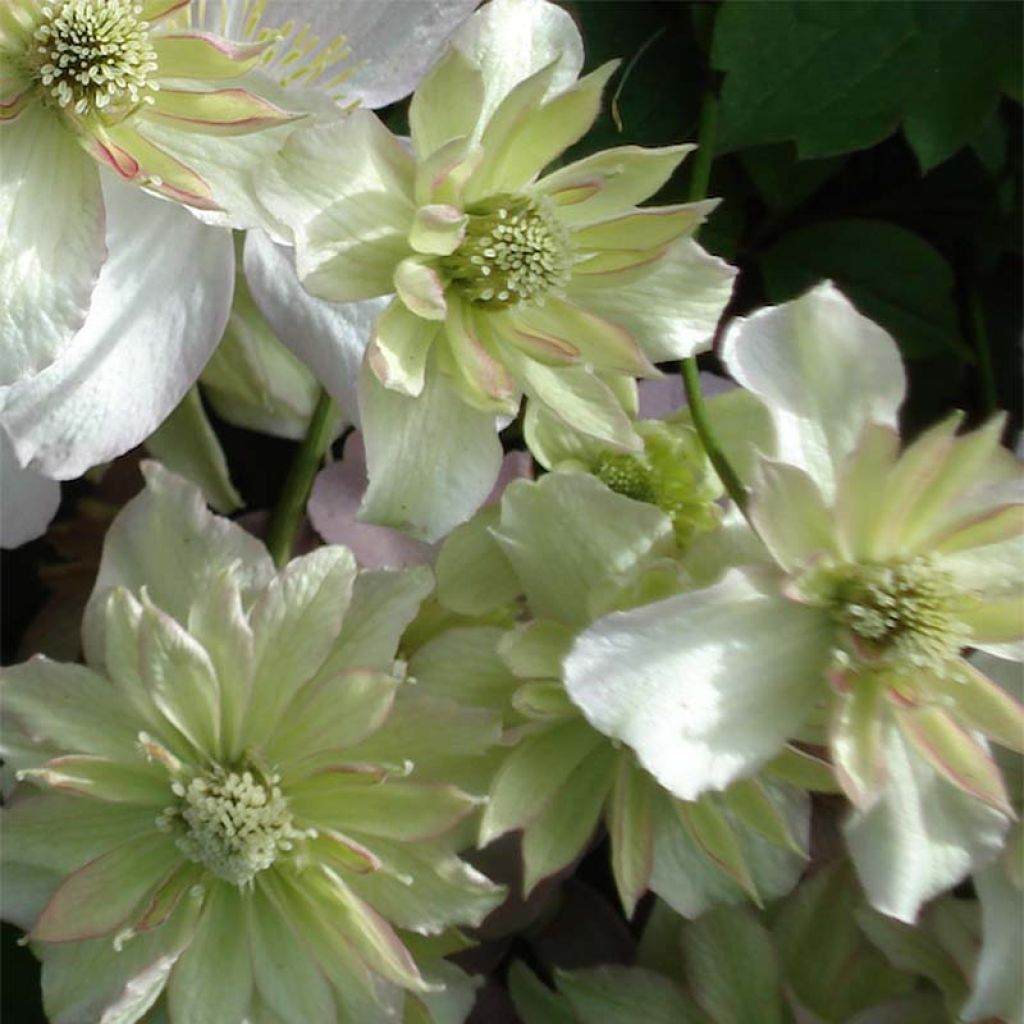

Clématite Double Delight
Clematis montana Double Delight - Anemone Clematis
Clematis montana Double Delight® 'Dainty Delight'
Anemone Clematis
Hello. After 3 years, my Clematis montana 'Double Delight' still hasn't bloomed. It grows very well with a rose bush, but without flowers. What do you advise? Thank you.
francine, 26/06/2021
Special offer!
Receive a €20 voucher for any order over €90 (excluding delivery costs, credit notes, and plastic-free options)!
1- Add your favorite plants to your cart.
2- Once you have reached €90, confirm your order (you can even choose the delivery date!).
3- As soon as your order is shipped, you will receive an email containing your voucher code, valid for 3 months (90 days).
Your voucher is unique and can only be used once, for any order with a minimum value of €20, excluding delivery costs.
Can be combined with other current offers, non-divisible and non-refundable.
Why not try an alternative variety in stock?
View all →This plant carries a 6 months recovery warranty
More information
We guarantee the quality of our plants for a full growing cycle, and will replace at our expense any plant that fails to recover under normal climatic and planting conditions.
Would this plant suit my garden?
Set up your Plantfit profile →
Description
Double Delight is a new variety of Clematis montana that is remarkable for its abundant white flowers with a delightful vanilla or chocolate fragrance. This vigorous climber will thrive in almost any soil that does not dry out too much during flowering. It will conquer an ugly fence, an old tree, a building, or a gate, covering them with lush, dark green foliage. It often blooms again at the end of summer. This charming clematis requires no pruning. It brings a breath of fresh air to romantic or English gardens, even in the mountains.
Clematis Double Delight is a recently obtained semi-woody and climbing perennial plant, belonging to the Ranunculaceae family. This voluptuous clematis will reach a height of 5 to 6m (16 to 20ft) in a few years, with a minimum spread of 2.5m² (8ft²). This variety is derived from C. montana, native to the Himalayas, an excellent garden plant widely planted in many of our regions. Like its parent, it does not require pruning, or only above a height of 2m (7ft), after flowering.
This clematis bears double flowers, 8 to 9 m (3 to 4in) in diameter. They bloom in April-May, and again on the new shoots in August-September. The bisexual flowers are grouped in axillary clusters of 1 to 5 flowers with long pedicels. They appear on the previous year's branches. They have numerous oval to lanceolate tepals, wider and longer on the outside of the corolla, smaller and tinged with green in the centre. They gracefully open in a star shape with a yellow stamen heart. Their colour is a diaphanous white, tinted with pistachio-green in the centre. The spicy and sweet fragrance of the flowers is reminiscent of chocolate or vanilla. The leaves are simple and palmate, with irregularly serrated edges. They are purple when young, before turning dark green, in perfect harmony with the white flowers. This clematis attaches itself to the support or host plant through voluble petioles, which transform into tendrils.
Plant Double Delight alongside climbing roses to extend the flowering period of walls and pergolas until the end of summer. The Clematis genus is rich in diversity, with varieties in all colours, shapes, and sizes, suitable for knowledgeable gardeners or beginners. Choose one of these climbers to give your garden a romantic and bohemian touch. Double Delight requires space to fully show its beauty. It will be magnificent in front of the house, entwined around a wrought iron gate. It will welcome visitors with its romantic and fragrant blooming.
Avoid excessive use of fertilisation, as it promotes foliage growth at the expense of flowers. Avoid mulching to prevent excessive moisture, which can lead to disease.
Clematis montana Double Delight - Anemone Clematis in pictures
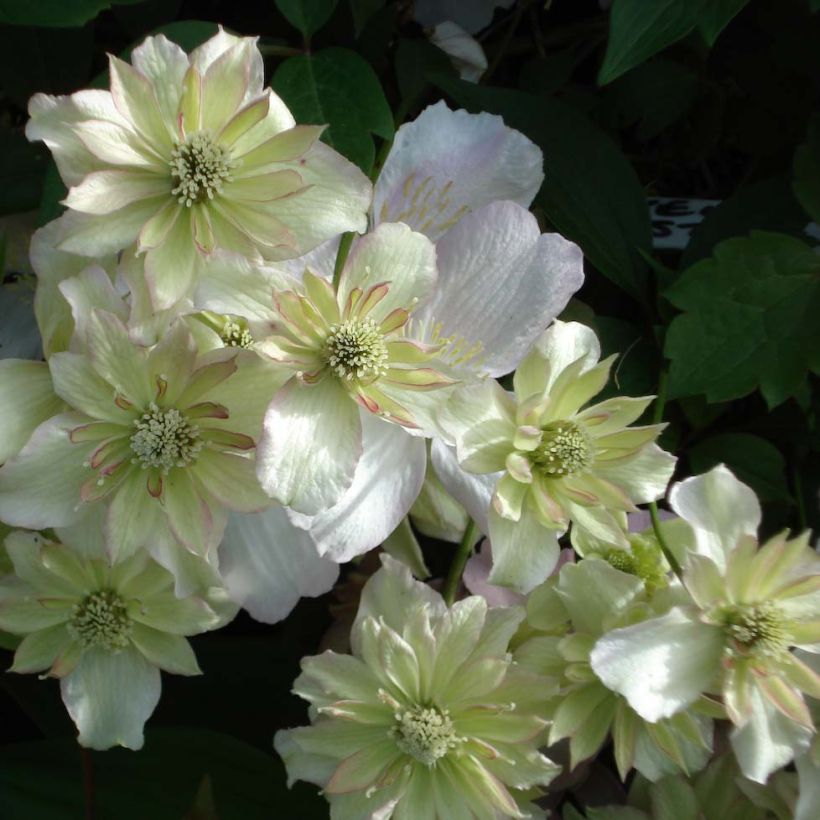

Plant habit
Flowering
Foliage
Botanical data
Clematis
montana
Double Delight® 'Dainty Delight'
Ranunculaceae
Anemone Clematis
Cultivar or hybrid
Other Clematis Montana
View all →Planting and care
Plant in spring or autumn. It prefers well-drained, well-worked, fertile soil. Choose a location where its head will be in the sun and its base in shade. Plant at a depth of 5cm (2in), with the root ball laid flat on the ground instead of vertically. You can protect the base with a flat tile, for example, which will provide the necessary shade. The soil should remain moist in summer, even though it will tolerate some drought after a few years. Cover the base with a small mound of soil to encourage new shoots. After planting, prune the stems to 30cm (12in) from the base, above a pair of buds. Train the stems loosely to help the plant cling on its own. The subsequent pruning will only involve removing dead or damaged stems, either at the end of winter or after flowering.
Planting period
Intended location
Care
Planting & care advice
-
, onOrder confirmed
Reply from on Promesse de fleurs
Similar products
Haven't found what you were looking for?
Hardiness is the lowest winter temperature a plant can endure without suffering serious damage or even dying. However, hardiness is affected by location (a sheltered area, such as a patio), protection (winter cover) and soil type (hardiness is improved by well-drained soil).

Photo Sharing Terms & Conditions
In order to encourage gardeners to interact and share their experiences, Promesse de fleurs offers various media enabling content to be uploaded onto its Site - in particular via the ‘Photo sharing’ module.
The User agrees to refrain from:
- Posting any content that is illegal, prejudicial, insulting, racist, inciteful to hatred, revisionist, contrary to public decency, that infringes on privacy or on the privacy rights of third parties, in particular the publicity rights of persons and goods, intellectual property rights, or the right to privacy.
- Submitting content on behalf of a third party;
- Impersonate the identity of a third party and/or publish any personal information about a third party;
In general, the User undertakes to refrain from any unethical behaviour.
All Content (in particular text, comments, files, images, photos, videos, creative works, etc.), which may be subject to property or intellectual property rights, image or other private rights, shall remain the property of the User, subject to the limited rights granted by the terms of the licence granted by Promesse de fleurs as stated below. Users are at liberty to publish or not to publish such Content on the Site, notably via the ‘Photo Sharing’ facility, and accept that this Content shall be made public and freely accessible, notably on the Internet.
Users further acknowledge, undertake to have ,and guarantee that they hold all necessary rights and permissions to publish such material on the Site, in particular with regard to the legislation in force pertaining to any privacy, property, intellectual property, image, or contractual rights, or rights of any other nature. By publishing such Content on the Site, Users acknowledge accepting full liability as publishers of the Content within the meaning of the law, and grant Promesse de fleurs, free of charge, an inclusive, worldwide licence for the said Content for the entire duration of its publication, including all reproduction, representation, up/downloading, displaying, performing, transmission, and storage rights.
Users also grant permission for their name to be linked to the Content and accept that this link may not always be made available.
By engaging in posting material, Users consent to their Content becoming automatically accessible on the Internet, in particular on other sites and/or blogs and/or web pages of the Promesse de fleurs site, including in particular social pages and the Promesse de fleurs catalogue.
Users may secure the removal of entrusted content free of charge by issuing a simple request via our contact form.
The flowering period indicated on our website applies to countries and regions located in USDA zone 8 (France, the United Kingdom, Ireland, the Netherlands, etc.)
It will vary according to where you live:
- In zones 9 to 10 (Italy, Spain, Greece, etc.), flowering will occur about 2 to 4 weeks earlier.
- In zones 6 to 7 (Germany, Poland, Slovenia, and lower mountainous regions), flowering will be delayed by 2 to 3 weeks.
- In zone 5 (Central Europe, Scandinavia), blooming will be delayed by 3 to 5 weeks.
In temperate climates, pruning of spring-flowering shrubs (forsythia, spireas, etc.) should be done just after flowering.
Pruning of summer-flowering shrubs (Indian Lilac, Perovskia, etc.) can be done in winter or spring.
In cold regions as well as with frost-sensitive plants, avoid pruning too early when severe frosts may still occur.
The planting period indicated on our website applies to countries and regions located in USDA zone 8 (France, United Kingdom, Ireland, Netherlands).
It will vary according to where you live:
- In Mediterranean zones (Marseille, Madrid, Milan, etc.), autumn and winter are the best planting periods.
- In continental zones (Strasbourg, Munich, Vienna, etc.), delay planting by 2 to 3 weeks in spring and bring it forward by 2 to 4 weeks in autumn.
- In mountainous regions (the Alps, Pyrenees, Carpathians, etc.), it is best to plant in late spring (May-June) or late summer (August-September).
The harvesting period indicated on our website applies to countries and regions in USDA zone 8 (France, England, Ireland, the Netherlands).
In colder areas (Scandinavia, Poland, Austria...) fruit and vegetable harvests are likely to be delayed by 3-4 weeks.
In warmer areas (Italy, Spain, Greece, etc.), harvesting will probably take place earlier, depending on weather conditions.
The sowing periods indicated on our website apply to countries and regions within USDA Zone 8 (France, UK, Ireland, Netherlands).
In colder areas (Scandinavia, Poland, Austria...), delay any outdoor sowing by 3-4 weeks, or sow under glass.
In warmer climes (Italy, Spain, Greece, etc.), bring outdoor sowing forward by a few weeks.






























